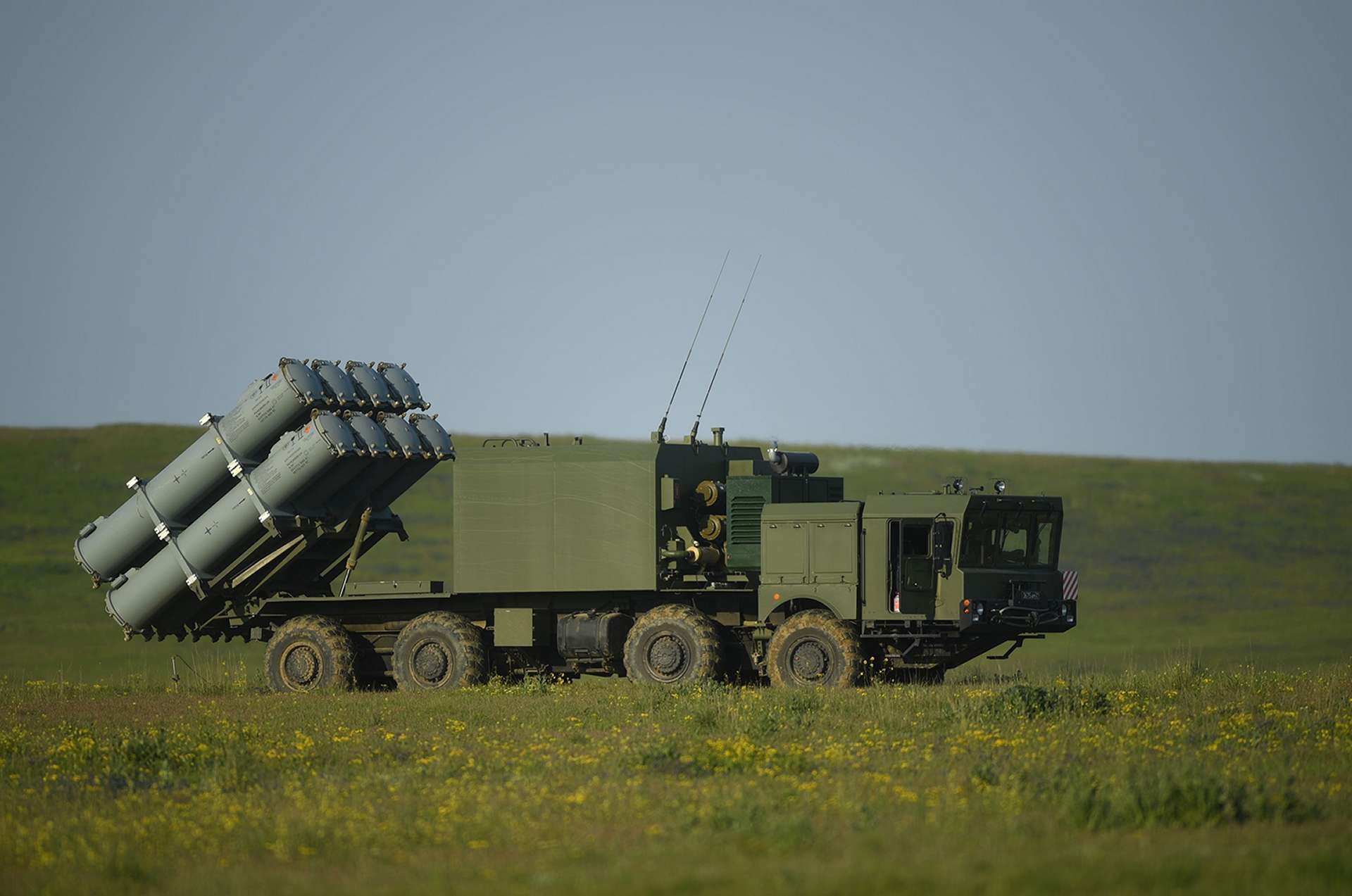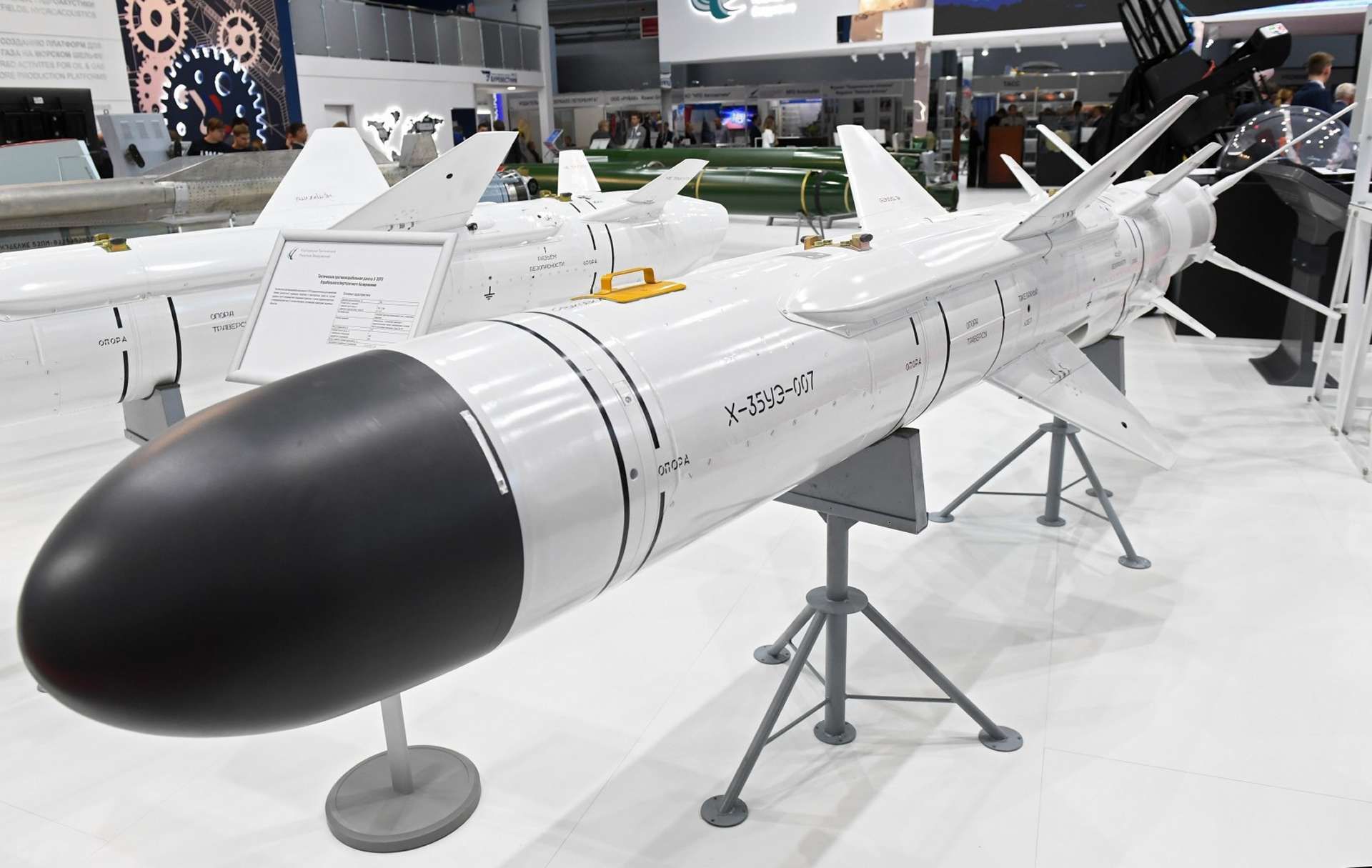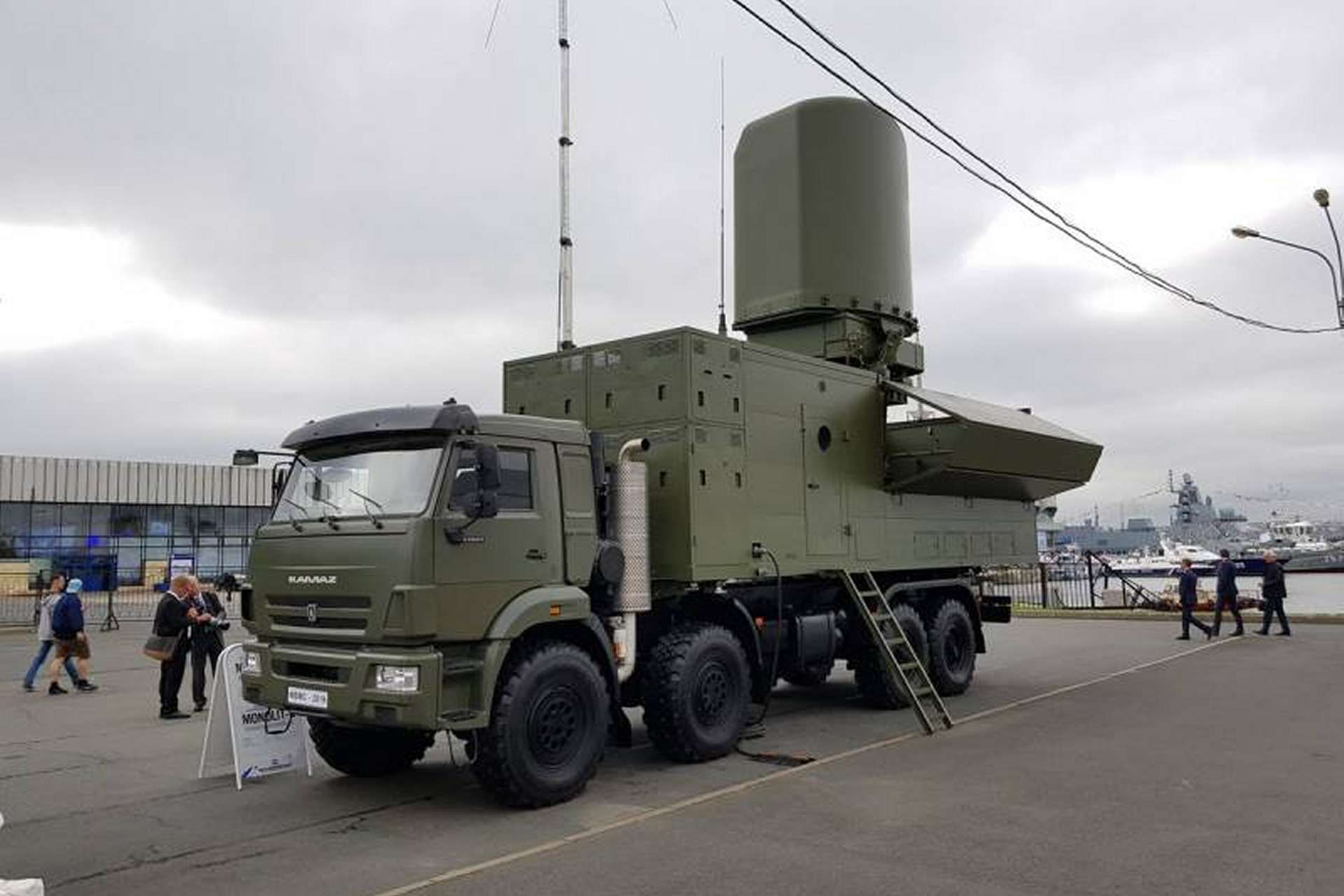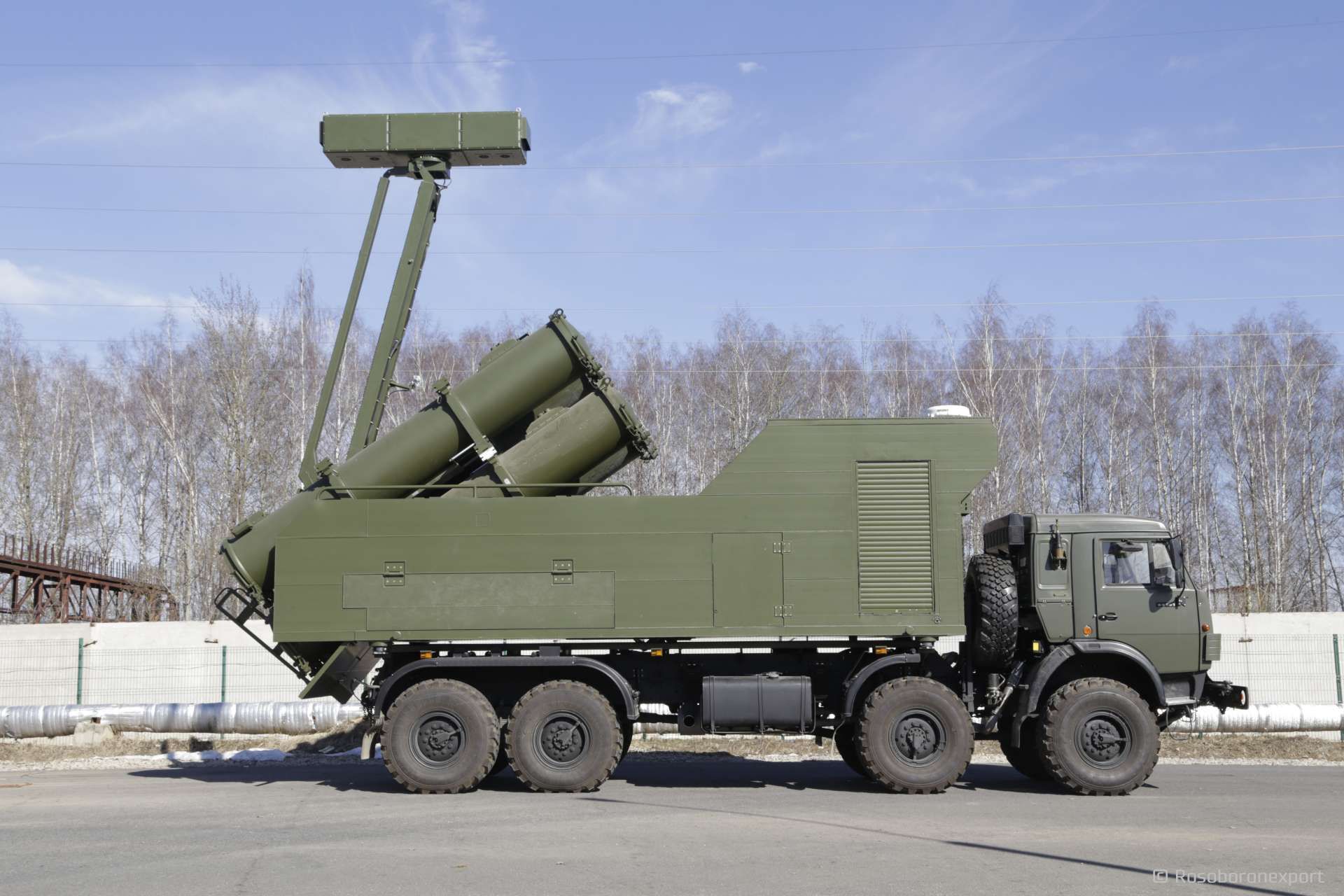Breaking News
Russia's Rubezh-M coastal missile system ready to sink enemy ships up to 5,000 tons.
According to several Russian media outlets, the Russian Kaluga instrument-making plant "Typhoon," part of the Morinformsystems-Agat concern, completed the development of the Rubezh-M coastal missile system on July 6, 2024. This system is now reportedly being prepared for adoption by the Russian Navy, along with its export version, the Rubezh-ME. The Rubezh-M integrates a control center, radar, and launchers on a KamAZ chassis, incorporating all necessary components such as four missiles, a locator, control systems, power supply, and communications.
Follow Army Recognition on Google News at this link

The Rubezh-M coastal missile system, using Kh-35U Uran anti-ship missiles, can target surface targets such as ships up to 5,000 tons. (Picture source: Russian media)
The development of the Rubezh-M began in the mid-2010s and concluded by the end of the decade. By early 2019, the Typhoon plant had presented the system's advertising materials, revealing its main features and parameters. In July 2019, the experimental version of the Rubezh-M/ME was first shown to the public at the International Maritime Defense Show (IMDS-2019) in St. Petersburg, showcasing its self-propelled launcher and control post. Since then, the system has been displayed at various domestic exhibitions, including the latest IMDS in St. Petersburg, where its features and advantages were presented.
Concurrent with these exhibitions, tests of the system were conducted. Initial tests occurred in the late 2010s, and by September 2020, the developer announced that testing would conclude by the end of 2021. The specific nature of these tests—whether factory, state, or joint—was not disclosed, but the Typhoon plant reportedly completed all necessary evaluations. The system is now positioned for market promotion and potential customer acquisition.
Morinformsystem-Agat, along with Rosoboronexport, is promoting the export version of the Rubezh-M on the international market, anticipating orders from several countries soon. Representatives of the Navy believe that the Rubezh-M system achieved satisfactory results during testing and will soon be accepted into service and produced serially. This system is intended to complement the larger and more expensive Bal coastal missile system, which can accommodate up to eight missiles per launcher.

The Rubezh-M system is intended to complement the larger and more expensive Bal coastal missile system, which can accommodate up to eight missiles per launcher. (Picture source: Russian media)
Given Russia's maritime borders with 12 countries, spanning over 39,000 km (approximately the length of the equator), and the current international situation, the Rubezh-M coastal missile system is seen as an essential addition to the Russian military's coastal artillery capabilities. There is an expectation that it will soon be officially adopted into service. The Rubezh-M/ME is designed to protect territorial waters and exclusive economic zones from enemy ships and vessels, capable of detecting and attacking various surface and potentially ground targets. Unlike its 1970s predecessor, the 4K51 Rubezh, the Rubezh-M/ME incorporates modern technologies and systems, based on solutions from the 3K60 Bal project but significantly redesigned.
A distinctive feature of the Rubezh-M/ME coastal missile system is its integration of all essential components on a single chassis, including radar, a control cabin, and a launcher with missiles, allowing it to independently perform combat missions. This concept, referred to in Russia as a "boat on wheels," emphasizes the system's mobility and maneuverability, similar to the Russian Navy's missile boats but operating on land. The Rubezh-M missile system uses either the SPU-A radar or the SPU-P passive radar station for independent target detection. The active radar detects surface targets up to 250 km away, while the passive radar can detect targets up to 500 km away. The onboard equipment processes the received information and transmits it to the missile before launching at the target. The combat control system can also process data from its own radar reconnaissance systems and third-party detection systems.
The system's automation allows all information and flight data to be sent to the missile with minimal operator involvement, enabling control by just one crew member. It takes less than one minute to prepare the Rubezh-M for missile launch. The Rubezh-M system has completed testing, and its adoption into service is currently under consideration, as according to some sources, the Rubezh-M system is also capable of hitting ground radar targets. The Rubezh-M system, with a launcher for four missiles, can detect and attack various surface targets using Kh-35U Uran anti-ship missiles at any time of day, in any weather conditions, and even under electronic warfare and air defense operations.

The Kh-35UE missile, the primary armament of the Rubezh-ME, features a small-sized turbojet engine, achieving speeds of 0.8-0.85 Mach and a flight range of up to 260 kilometers for export versions and up to 450-500 kilometers for domestic versions. (Picture source: Russian media)
The Kh-35U missile measures 4,400 mm in length, 420 mm in diameter, with a wingspan of 1,330 mm. Designed to destroy surface targets such as ships up to 5,000 tons, this anti-ship missile flies at an altitude of about 10 meters above wave crests during the cruise phase and about 3-4 meters during the terminal phase, which, combined with its low radar cross-section, makes it difficult to detect and intercept. The missile's subsonic cruising speed is 265-280 m/s, approximately 1,000 km/h, with a range of 7 to 260 km for export versions, and up to 500 km for the modernized non-export version for the Russian Navy. The distance from the coastline for launching is up to 15 km, with a launch interval of about 3 seconds between missiles, as the missile uses inertial and satellite navigation alongside its radar homing head.
The Kh-35UE missile, the primary armament of the Rubezh-ME, features a small-sized turbojet engine, achieving speeds of 0.8-0.85 Mach and a flight range of up to 260 kilometers for export versions and up to 450-500 kilometers for domestic versions. The missile's radar homing head activates close to the target, capable of operating in both active and passive modes, and it carries a 145-kilogram high-explosive warhead effective against small and medium-sized surface targets. Interestingly, the Kh-35 series missiles, equipped with a solid-fuel booster and a 145 kg penetrating high-explosive incendiary warhead, are also used by the Bal coastal missile system developed by the Moscow Design Bureau of Mechanical Engineering.

The system also includes a self-propelled command and control and communications post (SKPUS), built on a similar chassis but with a different superstructure and equipped with the Monolith-B radar. (Picture source: Russian media)
A typical Rubezh-ME battery comprises up to eight launcher vehicles with missiles and a mobile command post equipped with the Monolith-B radar. This setup is also based on the KAMAZ 8x8 military truck chassis. Each launcher vehicle is supported by an associated reloading vehicle, equipped with a crane and carrying reload missiles. A Rubezh-ME battery can launch up to 32 anti-ship cruise missiles, sufficient to disrupt the operations of a large hostile battlegroup. After launching, it takes 30-40 minutes to reload the launcher vehicles.
The system also includes a self-propelled command and control and communications post (SKPUS), built on a similar chassis but with a different superstructure and equipped with the Monolith-B radar. This radar enhances the system's target tracking capabilities and overall operational range.

A distinctive feature of the Rubezh-M/ME coastal missile system is its integration of all essential components on a single chassis, including radar, a control cabin, and a launcher with missiles, allowing it to independently perform combat missions. (Picture source: Rosoboronexport)


























